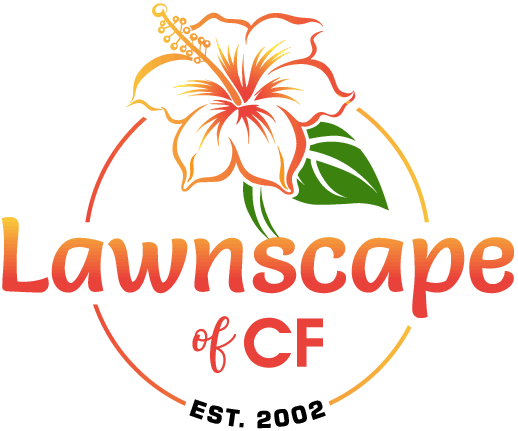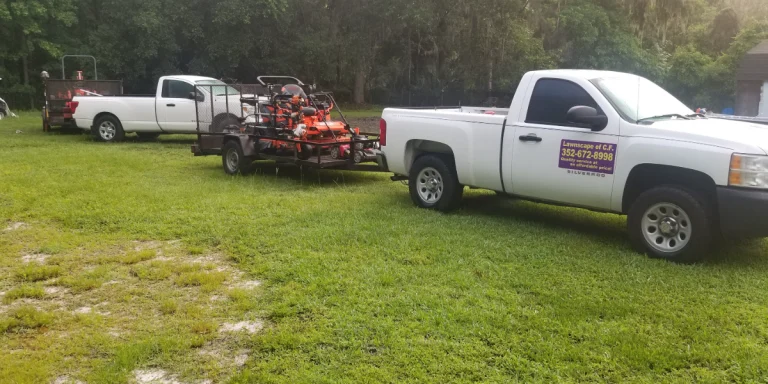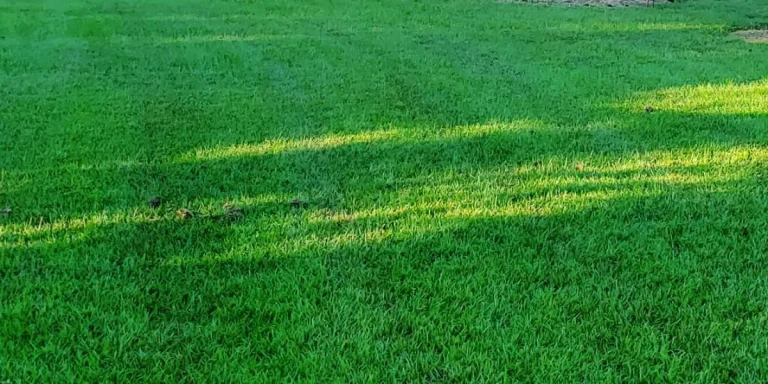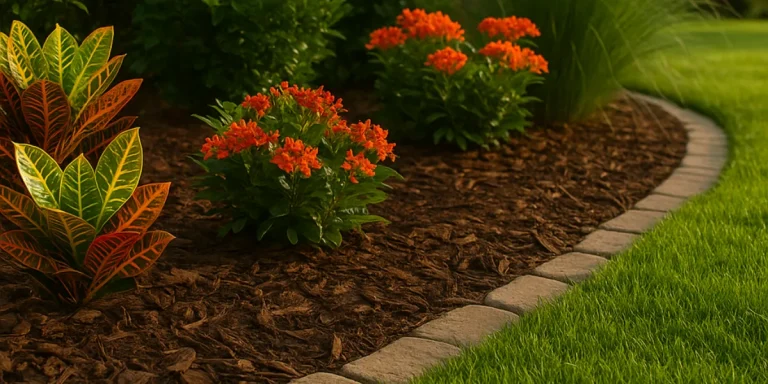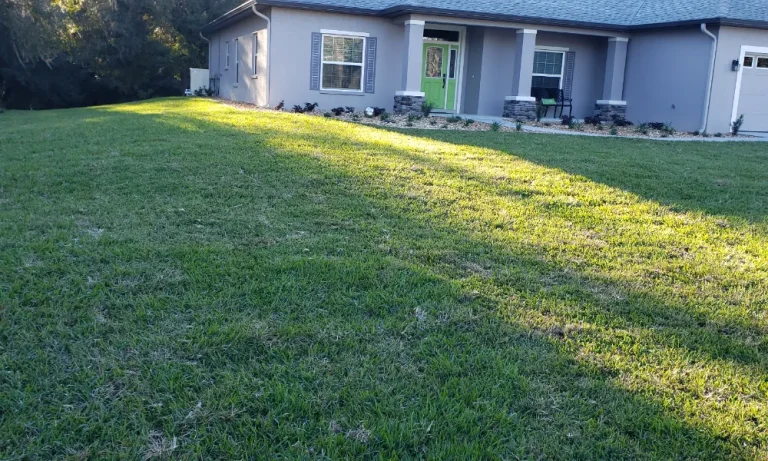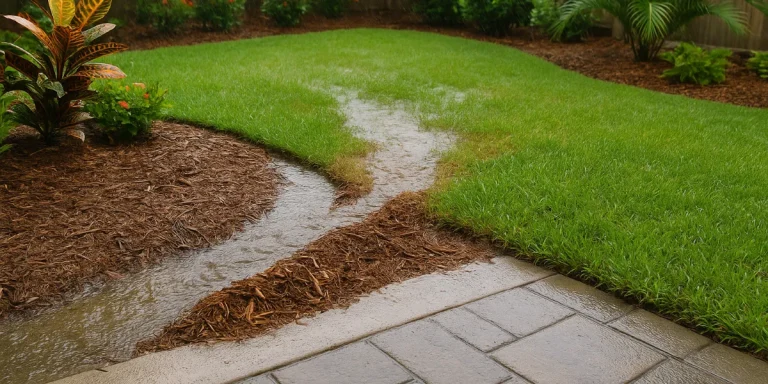Solving Bare Spots in Shaded Areas of Your Lawn
Bare spots in shaded areas of your lawn can be one of the most frustrating landscaping issues for Gainesville homeowners. Even with regular mowing, watering, and fertilizing, those patchy or thinning areas under trees or next to buildings often refuse to grow the way the rest of your yard does.
At Lawnscape of Central Florida, we’ve helped countless clients overcome this common challenge with proven, site-specific solutions. If you’re tired of fighting with bare patches in the shade, this guide will help you understand the root of the problem—and how we can fix it for good.
Why grass struggles in the shade
It’s easy to assume that if your grass grows well in one part of your yard, it should thrive everywhere. But shaded areas often tell a different story. Even in Florida’s warm and grass-friendly climate, lawns in shaded zones tend to struggle without the right care and conditions.
Whether it's the canopy of a large oak tree or the shaded side of your home, these spots often suffer from persistent thinning, browning, or bare patches. Here's why:
Lack of sunlight
Grass depends on sunlight to produce energy through photosynthesis. Without it, even healthy turf varieties can begin to fail.
-
- Most grass types require 4 to 6 hours of direct sunlight daily
- Limited sunlight results in weak root systems and slow growth
- Turf may appear pale, thin, or patchy even with regular watering
- Shaded grass is more vulnerable to disease and environmental stress
Compacted or poor-quality soil
The soil under shaded areas—especially under trees—is often dry, compacted, or nutrient-depleted. This makes it difficult for grass to establish strong roots.
-
- Tree cover limits rainfall penetration, causing soil to dry out
- Compacted soil restricts root growth and water absorption
- Organic material is often lacking, reducing soil fertility
- Lawn care in Gainesville often requires grading and soil amendments in these areas before new growth can take hold
Competition from tree roots
Shade from trees can be a blessing during hot Florida summers—but their root systems create intense competition for resources.
-
- Tree roots compete directly with turfgrass for water and nutrients
- Shallow roots may physically crowd out grass roots
- Grass planted near mature trees often dries out faster
- In many cases, mulch installation or shade-tolerant landscape beds are better long-term solutions
Poor airflow and moisture imbalance
Shaded areas usually have less air movement, which disrupts the natural drying cycle and creates inconsistent moisture levels.
-
- Low airflow increases humidity, which promotes fungal growth
- Damp conditions may lead to rot, mold, or turf diseases
- In contrast, dense canopies may block water altogether, causing dryness
- These zones need custom lawn care strategies to balance moisture levels effectively
Steps to fix shaded bare spots in your lawn
Shaded bare spots can be stubborn, but they’re not impossible to fix—especially with the right knowledge and tools. At Lawnscape of Central Florida, we approach every yard with a tailored solution based on your property’s unique conditions.
Here’s our step-by-step process for repairing bare lawn areas in the shade:
1. Evaluate the site conditions
Every lawn is different, so we start by diagnosing the root of the problem. During our site assessment, we examine:
-
-
- The level and duration of sun exposure
- Soil texture, compaction, and nutrient levels
- Drainage issues or runoff patterns
- Presence of invasive tree roots or competing vegetation
-
This evaluation helps us determine whether soil improvement, grading, tree trimming, or a complete sod installation will provide the best long-term result.
2. Improve soil quality
Shaded areas often have poor soil conditions, which prevent new grass from establishing. We restore these zones by:
-
-
- Loosening compacted soil to allow for better root penetration
- Adding topsoil, compost, or other organic matter to improve structure
- Adjusting pH levels if needed for sod compatibility
-
This soil rehab process is often a key first step in our new lawn installation services and creates the foundation for healthy turf.
3. Choose shade-tolerant grass
Grass selection is crucial when dealing with limited light. We recommend varieties specifically suited to partial shade—most often St. Augustine sod, which performs better in shaded Florida lawns than most other warm-season grasses.
-
-
- For moderate shade: St. Augustine or certain cultivars of Zoysia
- For deep shade: Grass alternatives or full groundcover conversions
-
If conditions are too severe for any grass to survive, we’ll recommend landscape alternatives to avoid ongoing frustration.
4. Trim trees and shrubs strategically
One of the easiest ways to improve light conditions is by selectively trimming nearby vegetation. We offer professional shrub and bush trimming as well as small tree pruning to:
-
-
- Allow more filtered sunlight into shaded areas
- Increase airflow to reduce disease risk
- Improve the overall health and balance of your landscape
-
We never recommend aggressive thinning—just enough to tip the balance in your lawn’s favor.
5. Reseed or re-sod with proper preparation
Once the soil and light conditions are addressed, we move on to establishing new turf:
-
-
- Grading and leveling the area for proper drainage
- Applying soil amendments and topdressing
- Installing fresh sod or using a premium seed blend suited for partial shade
- Rolling and watering to ensure strong root-to-soil contact
-
This careful preparation process gives your lawn the best chance to recover and remain healthy for seasons to come.
6. Consider low-maintenance alternatives
In certain situations—especially deep shade under dense trees—grass may never thrive. Instead of fighting nature, we often recommend attractive, low-maintenance solutions such as:
-
-
- Mulch installation to create a clean, natural look that suppresses weeds
- Rock installation or decorative gravel for improved drainage and visual contrast
- Flower bed installation with shade-loving plants like ferns, caladiums, or hostas
-
These options reduce maintenance, eliminate ongoing problem areas, and often enhance the curb appeal of your entire property.
A real solution: Gainesville homeowner case study
A homeowner in Southeast Gainesville called us after years of struggling with a bare patch beneath their backyard oaks. After a site evaluation, we discovered compacted soil, deep tree roots, and only two hours of daily sunlight in that section. We amended the soil, thinned the overhead canopy to allow more light, and replaced the struggling turf with shade-tolerant St. Augustine sod. We then added mulch and ornamental plants around the perimeter to break up the space.
Within weeks, the lawn transformed from patchy and frustrating to full, green, and easy to maintain.
Serving Gainesville and surrounding areas
Lawnscape of Central Florida proudly provides expert lawn and landscape services to homeowners in:
-
- Gainesville
- Ocala
- Williston
- Micanopy
- McIntosh
- Reddick
We’re known for quality sod installation, lawn maintenance, mulch installation, and complete landscape design tailored to North Central Florida conditions.
Ready to repair the shaded areas in your lawn?
Don’t let bare spots ruin your landscape. Whether you need new sod, shade-tolerant lawn alternatives, or a complete yard refresh, Lawnscape of Central Florida has the experience and solutions to restore your lawn’s beauty.
Call us today or request a free estimate to learn how we can help you eliminate those stubborn bare patches—while making your yard healthier and easier to maintain.
We proudly serve Gainesville, Ocala, Williston, Micanopy, McIntosh, and Reddick with reliable, high-quality landscaping and lawn care solutions.
